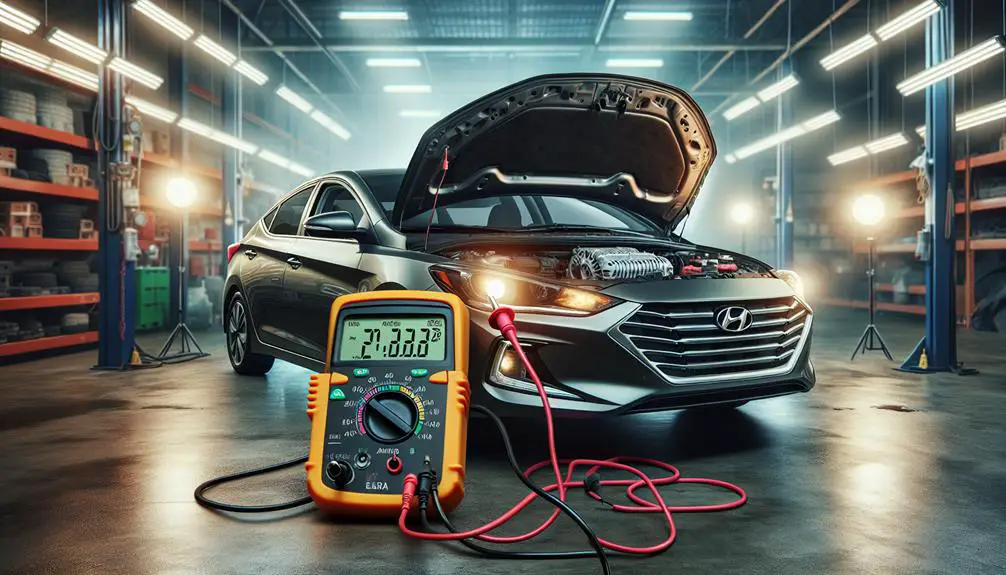To replace the alternator in a Hyundai Elantra, follow these steps:
- Disconnect the battery.
- Locate the alternator.
- Remove the belt and mounting bolts.
- Replace the alternator.
- Reattach the belt.
- Finally, reconnect the battery.
This DIY approach saves mechanic costs and empowers owners.
Gather Necessary Tools

Before you begin replacing the alternator in your Hyundai Elantra, make sure you have the necessary tools. This is important for a successful replacement. Without the correct tools, you might damage your car.
First, you need wrenches for loosening and tightening bolts and nuts. Have different sizes because the alternator and related parts have bolts of various sizes.
A socket set is also crucial. Sockets help with hard-to-reach bolts or those that need more force to remove. A ratchet will help in tight spaces.
You'll also need screwdrivers, both flat-head and Phillips-head, to disconnect electrical connectors and remove any clamps or brackets.
A torque wrench is important to ensure bolts are tightened correctly. This prevents damage and ensures the alternator works well.
Finally, wear gloves and safety glasses for protection. Gloves guard against cuts and contaminants, and safety glasses protect your eyes from debris.
Having these tools ready will make replacing the alternator easier and less frustrating.
Locate the Alternator
To find the alternator in a Hyundai Elantra, open the hood to access the engine area. Look for the alternator at the front of the engine. It appears as a metal can with a pulley on one side, facing the car's front. The alternator, responsible for charging the battery, connects to the car's electrical system and has wires coming from it. It also has a belt around the pulley that helps it generate electricity.
Avoid confusing the alternator with other parts like the air conditioning compressor or power steering pump, which also have belts and pulleys. You can identify the alternator by looking for electrical connectors and thick wires attached to it.
In some Elantra models, parts or covers might hide the alternator. You may need to move these for a better view but don't remove anything at this stage.
Remove the Old Alternator

First, find the alternator in your Hyundai Elantra and disconnect the negative cable from the battery for safety. This prevents electrical shocks or short circuits. With the battery disconnected, you can proceed to remove the alternator. Here's how to do it:
- Loosen the serpentine belt: First, loosen the serpentine belt around the alternator by moving the tensioner so you can take the belt off the alternator pulley.
- Disconnect electrical connections: The alternator has a few electrical connections, like the main power cable and possibly more plugs. Disconnect these carefully and remember how they were connected for when you install the new alternator.
- Unbolt the alternator: The alternator is kept in place by bolts. Find these bolts and use a wrench or socket set to remove them. Keep these bolts as you'll need them for the new alternator.
- Remove the alternator: With the belt and electrical connections removed, and the bolts taken out, you can remove the alternator. It might need some wiggling to get it out, especially in tight spaces.
With the old alternator removed, you're ready to install the new one. Being gentle with the components and keeping all parts organized will help with the new alternator's installation.
Install the New Alternator
Remove the old alternator from your Hyundai Elantra and get ready to install the new one.
First, place the new alternator where the old one was. Ensure it fits correctly in the mounting brackets without forcing it.
Then, by hand, start putting in the bolts that hold the alternator to the engine. Be careful not to damage the threads. After hand-tightening, use a wrench or socket set to tighten the bolts to the recommended torque.
Next, attach the electrical connections. Start with the large power cable, ensuring it's securely connected to the alternator. Then, reconnect any other wires or plugs, making sure they're secure.
Lastly, put the serpentine belt back on. Use a belt routing diagram if available. If not, remember or refer to a picture of the belt route. Use a belt tensioner tool to place the belt over the alternator pulley correctly. Release the tensioner to apply tension to the belt.
Now, the new alternator is installed. Remember to check that the installation is correct and the alternator is working properly.
Test the Installation

To make sure your new alternator works well, follow these steps:
- Check the battery voltage: Before turning on the engine, measure the battery voltage with a multimeter. It should be around 12.6 volts when the engine is off. This is your starting point for testing.
- Start the engine: Once the engine is running, the voltage should go up to between 13.8 and 14.2 volts on your multimeter. This shows the alternator is charging the battery correctly.
- Turn on electrical accessories: With the engine on, turn on the headlights, air conditioning, and other electrical accessories. The voltage should stay stable and not drop much. This means the alternator can handle the car's electrical needs.
- Perform a load test: To fully check the alternator, have a load test done at a service center. This test checks if the alternator can work well under stress.
Conclusion
You did a great job changing the alternator in your Hyundai Elantra.
First, you gathered all the tools you needed and found the old alternator. Then, you took out the old one and put in a new one carefully.
The last step was to make sure everything was working right.
This saved you money and made you feel good about fixing your car.
So, pat yourself on the back for doing a good job and enjoy how well your Elantra runs now.